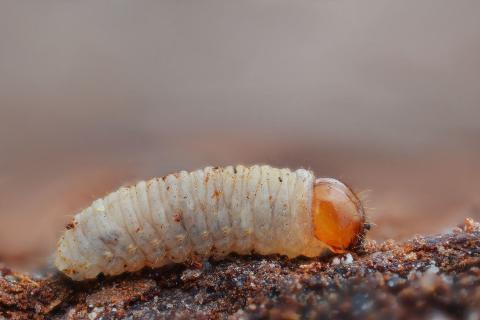Predicting the spread of the great spruce bark beetle
Invasive non-native species pose a threat to ecosystems, economies, and, in some cases, human health. The great spruce bark beetle (Dendroctonus micans) is a commercially significant invasive pest of Scottish spruce trees, which arrived in Scotland within the last decade. Spruce trees are present across most of Scotland, so all regions of Scotland are at some risk from this invasion.
Challenge of predicting the spread of invasive species
Scottish Forestry has developed a control policy, which is designed to protect the economically important West of Scotland Pest Free Area, whose pest free status is critical to continuing the significant trade with Ireland. This control policy involves releasing a predator insect, which can reduce losses of up to 10% down to negligible levels in infested commercial spruce stands. However, the predator must be deployed into newly invaded stands to achieve maximum effectiveness in terms of reducing further spread. To do this requires being one step ahead of the pest, being able to predict where it will invade next, although spread patterns for invasive species can be complex. While the invasion wave front may move forwards over time, there may also be infilling behind the front and long range jumps ahead of the front into new territory. Such erratic patterns can be driven by landscape heterogeneities, as well as human mediated dispersal of the invader.
BioSS’ role and impact
BioSS-led research in the Scottish Government’s Strategic Research Programme has devised novel methods for predicting the spread of populations across heterogeneous landscapes, based on the reported presence of populations at given locations and times. Though these methods were initially applied to invasive plant species, work with SRUC and a pilot study funded by the Scottish Government's Plant Health Centre demonstrated the potential for the methods to be applied to data on the spread of D. micans. This led Forestry Commission Scotland to fund a more comprehensive and detailed study, which yielded high resolution risk maps containing predictions as to future spread of the beetle that now enable more effective implementation of its control policy.
Publications
Catterall S., Marion G., Davidson R.S. & Hutchings M.R. (2019). Predicting an invasion: the case of the great spruce bark beetle. SCRR Newsletter.
Future directions
The modelling methods applied to D. micans have the potential to be used for other invasive species spreading across heterogenous landscapes, including pests, pathogens, and plants.


